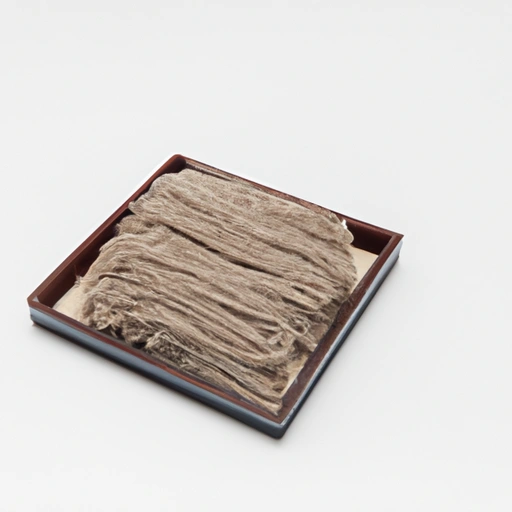Soba
Description

Soba is a type of thin noodle traditional to Japanese cuisine, made primarily from buckwheat flour. This ingredient is celebrated for its nutty flavor and firm texture, making it a versatile base for a multitude of dishes. In recipes, soba can be measured in ounces or grams, with a standard serving size being about 2 ounces (57 grams) dry noodles per person.
Common uses
In its most traditional form, soba is served cold with a dipping sauce or in a hot, clear broth. However, it is also used in a variety of salads, stir-fries, and other dishes where noodles are featured.
Nutritional value
Calories
A standard 2-ounce (57-gram) serving of dry soba noodles contains approximately 200 calories.
Protein
Soba provides about 8 grams of protein per 2-ounce serving, contributing to muscle maintenance and growth.
Fat
These noodles are low in fat, with about 0.5 grams per serving.
Carbohydrates
With around 42 grams of carbohydrates per 2-ounce serving, soba is a source of energy for the body.
Vitamins
Soba contains small amounts of B vitamins, particularly B2 (riboflavin) and B3 (niacin).
Minerals
Rich in minerals, soba provides manganese, magnesium, and phosphorus among others.
Health benefits
Soba noodles are known for their health benefits, such as promoting cardiovascular health due to their high content of rutin, a bioflavonoid known to strengthen blood vessels. The high fiber content also aids in digestion and supports healthy blood sugar levels.
Potential risks
While soba is generally considered healthy, the noodles can pose risks to individuals with buckwheat allergies. Additionally, many soba noodles are produced in facilities that also process wheat, posing a potential risk for those with gluten sensitivities or celiac disease.
Common recipes
Soba is commonly used in recipes like Zaru Soba (chilled soba noodles with dipping sauce), Soba Noodle Salad, and in various soups like Soba Noodle Soup with Vegetables.
Cooking methods
Soba noodles are typically boiled and can be used both hot and cold. They can also be stir-fried for a more textured dish.
Pairing with other ingredients
Soba pairs well with ingredients such as soy sauce, scallions, nori (seaweed), wasabi, and mirin. It also complements both vegetable and meat dishes, making it adaptable to different cuisines.
Summary
Soba, the Japanese buckwheat noodle, is not only steeped in history but is also a nutritious and adaptable food ingredient. Whether served cold in a traditional Zaru Soba or incorporated into a warm, hearty soup, soba offers a delightful texture and flavor that enhances many dishes. With its numerous health benefits and culinary versatility, soba is a valuable addition to any kitchen around the world.